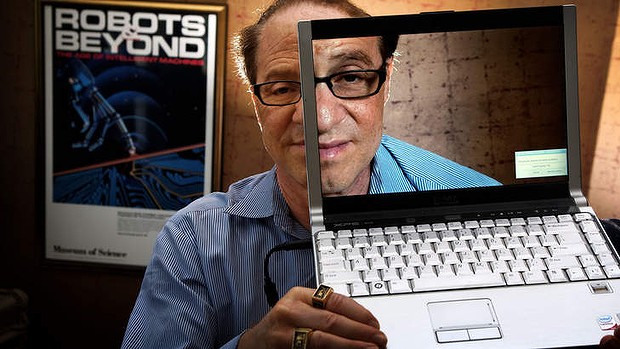The famous futurologist Raymond Kurzweil will lead the development of Google. Everyone - a body of nanobots by 2020?

A week ago ( as mentioned in Habré ), Google hired a new director for engineering development, and it was the famous futurologist Ray Kurzweil .
As expected, this event can raise Google’s promotions , and truly intrigues, because Kurzweil is considered both brilliant and insane: he is a pioneer in areas such as speech recognition technology, and with it believes that he will live forever after how to transfer your mind to the computer.
')
In his newsletter Kurzweil said :
“In 1999, I said that in ten years there would be technologies such as cars without a driver, and mobile phones that can answer your questions, but people rejected these predictions as unrealistic. After 10 years, Google has demonstrated such machines, and people actually ask questions to their Android phones.
We are now in a startling, ever-accelerating process of innovation, and Google is at the forefront of this. I have always worked on the creation of practical systems that will change people's lives - this is what interests me, as an inventor.
I’m extremely happy to work together with Google to work on some of the most difficult computer science problems to make predictions for the next decade a reality. ”
In one of his books, The Singularity is Near (“The Singularity Is Coming”) , published in 2005, the famous futurist predicted that people would soon “transform biology” and would exist in the universe as immortal cyborgs.
Here are just a few of the most incredible quotes from there :
In 2040, people will develop "means for instantly creating new parts of themselves, biological or non-biological," so that people can "use their biological body for a while, then not biological, then biological again, then change it, and so further ”(The Singularity is Near, p. 258);
At the end of 2020, it will be possible to eat any kind of harmful food, because everyone will have nano-bots introduced into the blood , which will provide us with the necessary microelements, and will remove the excess fat obtained after daily eating 20 packets of chips. (p. 304);
In 2010, “ computers ... will become almost invisible: they are sewn into clothes, built into furniture and surroundings.” Although the concept of “wearable” computers is discussed from time to time, it is still not clear that Samsung was selling its Galaxy in the form of a jacket. (p. 312);
At an uncertain moment in the future, it will be possible to transfer yourself to the consciousness (brain) of another person, and to see the world as he sees it , just like in the movie Being John Malkovich . (p. 316);
By 2033, “virtual prostitution” will be legalized . (p. 318);
By the middle of the 21st century, people are evolving into “ software-based people (software-based humans)” who will “live on the Internet, project their bodies where they want or want, including holographic and foggy (vapor) projections of bodies, and physical bodies consisting of swarms of nanobots. ”(p. 325);
Kurzweil, who is now 64 years old, knows that his body of flesh (or, as he calls it, “Body 1.0 ″) has a great chance to die before the moment when he can load his mind into a computer, and he will fly around the world in as a swarm of nanobots. Kurzweil says that in order to live to the day when such technological capabilities become available, he takes “250 supplements (tablets)” daily and receives “6 intravenous fluids every day (nutritional supplements that enter the blood directly, bypassing the digestive tract).” (p. 211)
Although for ordinary people of flesh and blood, all this looks superfluous, Kurzweil is willing to pay such a price for a ghostly chance of becoming immortal. And if you are now grinning, reading all this - who knows, maybe he will laugh last when you wither in the hospital, and he will fly in his program-controlled Tele 2.0.
Additionally:
- TechCrunch: Google Ink Full-Time Engineering Director Role; Ray Kurzweil Joins; Will Focus On Machine Learning, Language Processing
- Huffington Post: Google, Kurzweil, and the Information Transformation Age
- Interview: Ray Kurzweil on Translation Technology
Earlier on Habré:
- R. Kurzweil - How to Create a Mind (“How to create a mind”). Short review of the book
- Racing with the car: challenges and prospects for the economy of the future
- Fundamentals of the approach to the construction of universal intelligence. Part 1 , Part 2
- Ray Kurzweil Movie Transcendent Man
- The birth of AI will occur in the stock market
photo: Brisbane Times
What do you think - should rejoice, or not?
Do you support similar research directions?
Source: https://habr.com/ru/post/163655/
All Articles